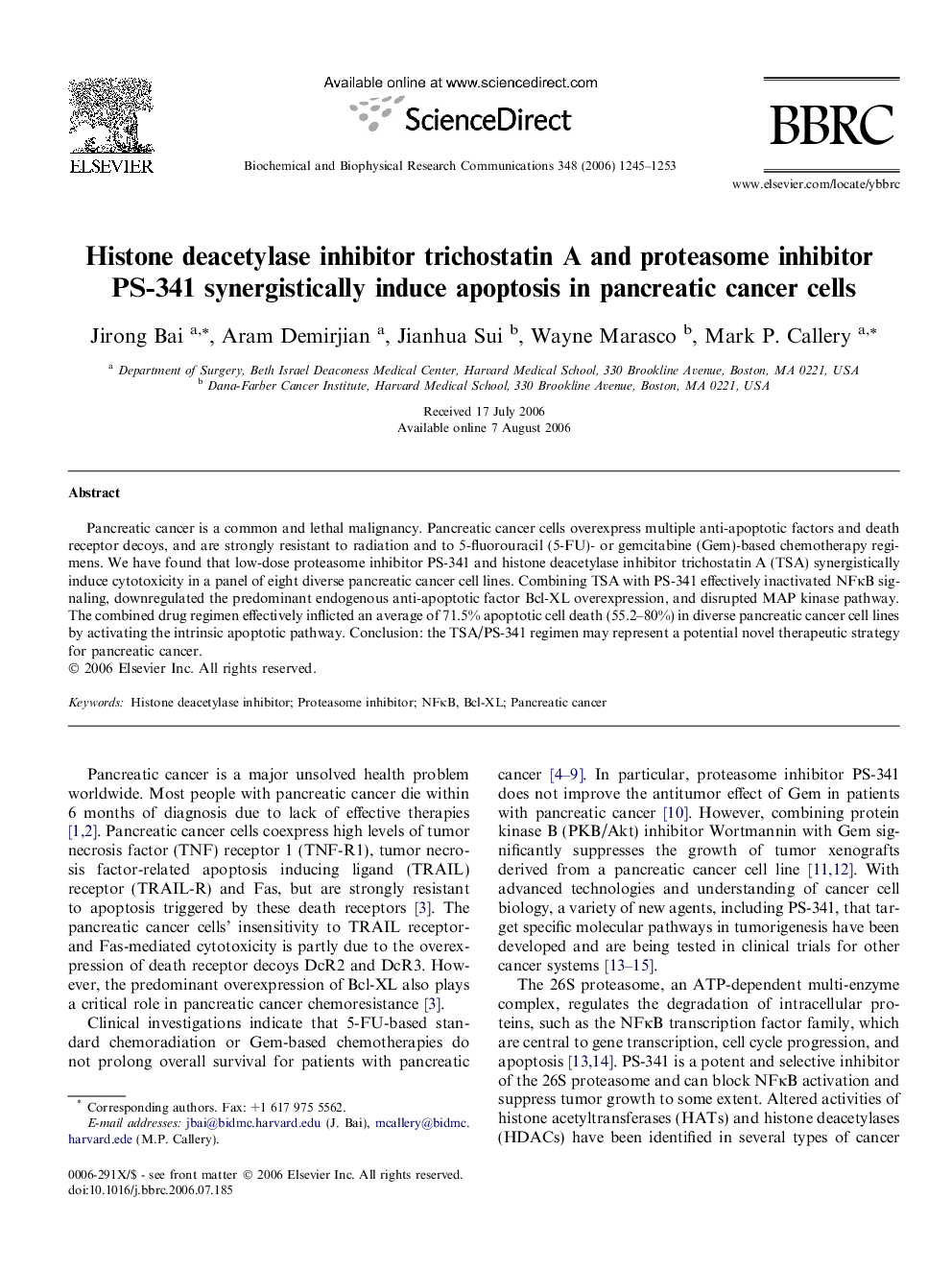| Article ID | Journal | Published Year | Pages | File Type |
|---|---|---|---|---|
| 1939007 | Biochemical and Biophysical Research Communications | 2006 | 9 Pages |
Pancreatic cancer is a common and lethal malignancy. Pancreatic cancer cells overexpress multiple anti-apoptotic factors and death receptor decoys, and are strongly resistant to radiation and to 5-fluorouracil (5-FU)- or gemcitabine (Gem)-based chemotherapy regimens. We have found that low-dose proteasome inhibitor PS-341 and histone deacetylase inhibitor trichostatin A (TSA) synergistically induce cytotoxicity in a panel of eight diverse pancreatic cancer cell lines. Combining TSA with PS-341 effectively inactivated NFκB signaling, downregulated the predominant endogenous anti-apoptotic factor Bcl-XL overexpression, and disrupted MAP kinase pathway. The combined drug regimen effectively inflicted an average of 71.5% apoptotic cell death (55.2–80%) in diverse pancreatic cancer cell lines by activating the intrinsic apoptotic pathway. Conclusion: the TSA/PS-341 regimen may represent a potential novel therapeutic strategy for pancreatic cancer.
